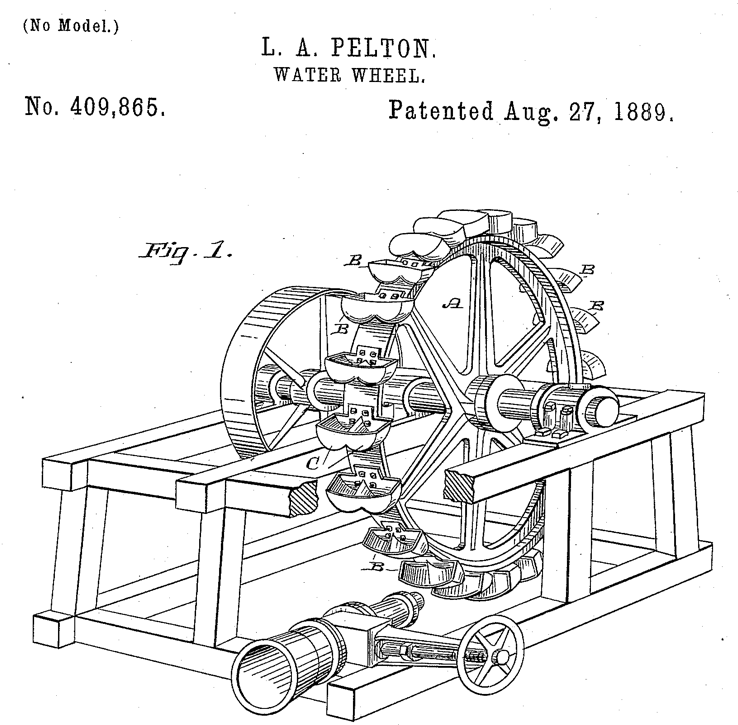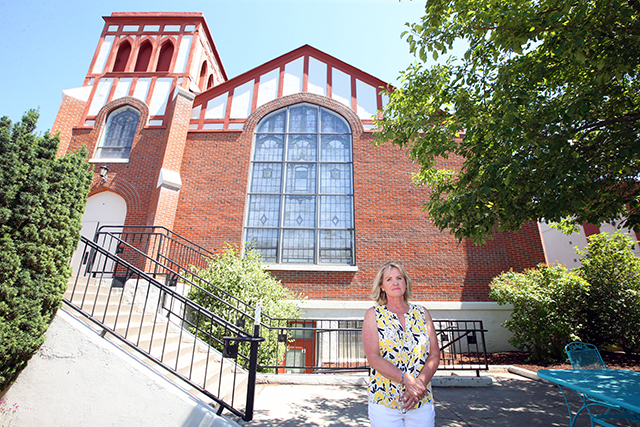Editorial: Bend may start producing in-pipe hydropower
Published 5:00 am Thursday, January 4, 2024

- This is an illustration of a Pelton wheel from one of Lester Allen Pelton's original patents. Water comes in through a nozzle or multiple nozzles and shoots out at the wheel spinning it. Pelton's inventions helped launch hydropower in the United States.
There’s power in the pipes that bring Bend’s water from its intake at Bridge Creek to the city’s water filtration at Outback. It’s untapped, perhaps 1.3 megawatts. That may be enough to power more than 700 homes.
About 9.5 miles of 30-inch and 36-inch pipe connect to Bridge Creek with an elevation drop of 1,017 feet. The energy created by the flowing water is now dissipated. It could be transformed into hydropower.
Trending
The city contracted with a consultant for an analysis of in-conduit hydro in Bend. We made a public records request for the report. It is still a draft and runs some 539 pages.
The draft’s conclusion: Yes, it makes sense at Outback. The water energy is there. There is space for construction. And it looks like the financials add up.
Other locations were also evaluated. Outback was the most clearly viable.
We aren’t saying hydro is going to happen at Outback. The draft report says it’s an opportunity.
Four vendors were contacted. They estimated power production at Outback could be between 1.2 megawatts and 1.3 megawatts, after what’s called a Pelton wheel or Pelton turbine was installed.
Estimates vary about how many homes 1 megawatt can power. It might be 700-800 homes. So we figured saying more than 700 homes was likely safe.
Trending
Several years ago, the city’s upgrades to its filtration system and pipes to Outback brought controversy. There was the cost — in the tens of millions. And some people feared the city’s growth and thirsts would suck up more surface water, putting pressure on a downstream and stressed Tumalo Creek. Environmental groups sued.
In the end, the new pipes and filtration were installed. Plans to construct in-pipe hydro at the same time were scrapped.
A key question for many people will now be: Would the city take more water from Bridge Creek just to boost hydropower?
The city told us no.
The city flows are limited to a maximum of the demand “for municipal use,” up to a maximum of 18.2 cubic feet per second from the Bridge Creek point of diversion, per city code. The city’s water right from the Forest Service is limited to that 18.2. And the watermaster for the Oregon Water Resources Department also has the authority to make adjustments to help the flows downstream in Tumalo Creek, according to the draft report.
The water issue is a starting point of many that would need to be resolved.
- There are significant capital costs for construction. The draft report suggests the range may be from $11 million to $17 million, depending on options. There will be maintenance and operations, too. Federal and state incentives may bring down the costs for construction.
- Will Bend be able to count on flows from Bridge Creek into the future as the climate and regulations change?
- Will Bend be able to get the necessary regulatory approvals?
- Details must be worked out with Pacific Power.
- The site may create additional noise.
Of course, the project is packed with possible benefits, reducing greenhouse gas emissions, providing green energy and creating energy resilience.
In-pipe hydropower represents untapped energy potential across the country. The U.S. Department of Energy identified 1.41 gigawatts of potential capacity. We have a share of that in Bend, if the city can take advantage of it.
The city’s report may just get a Pelton wheel turning.








